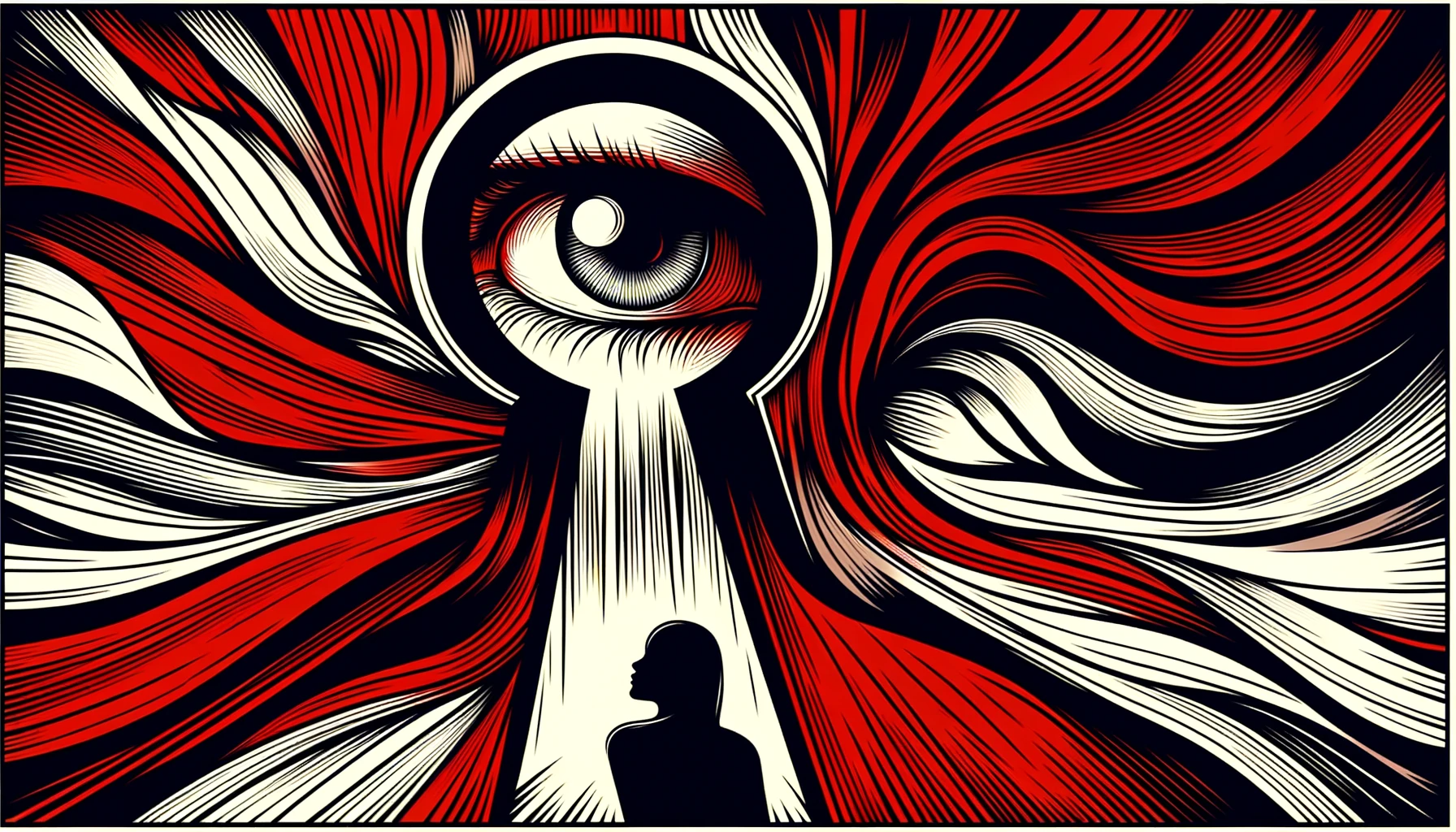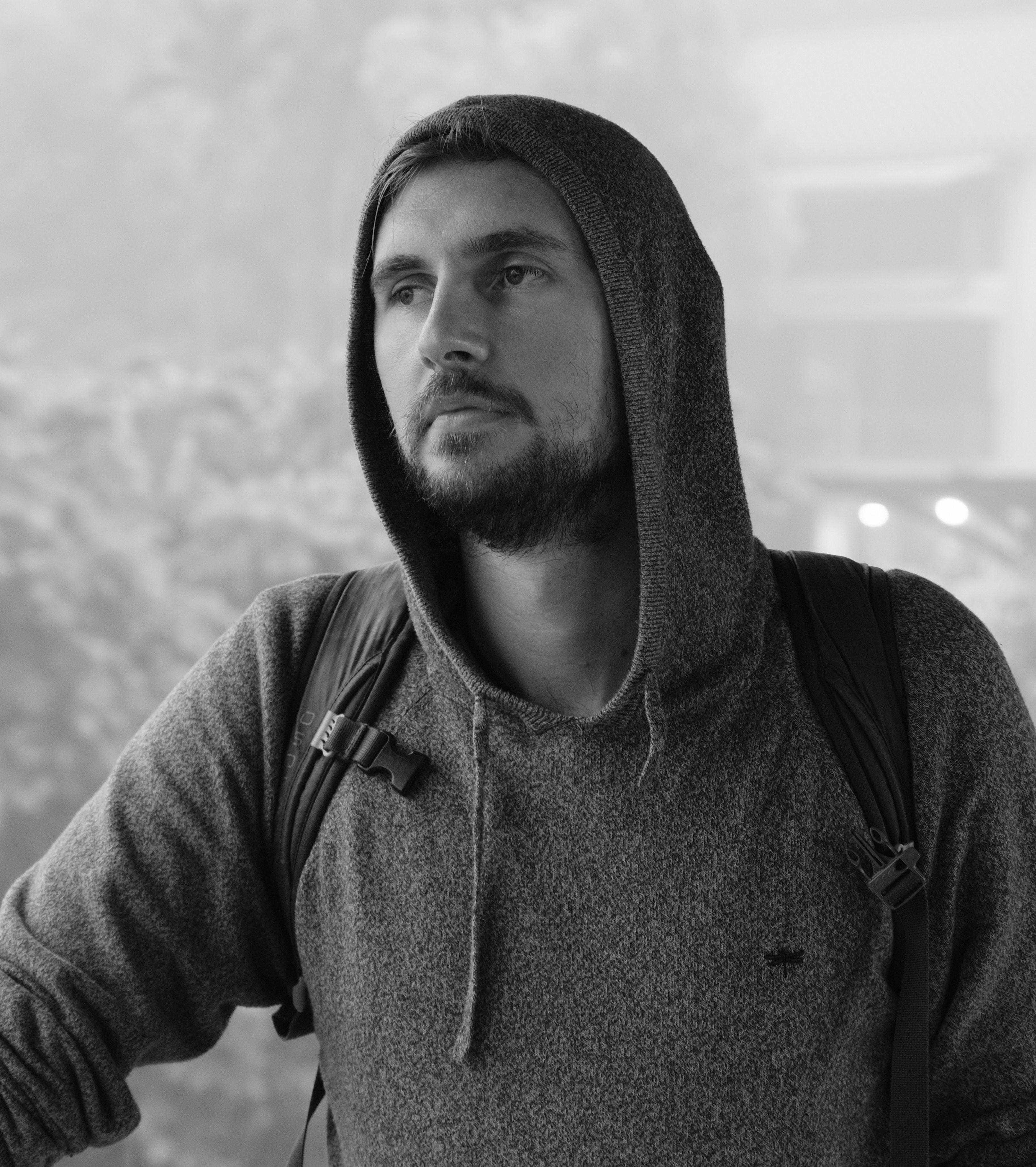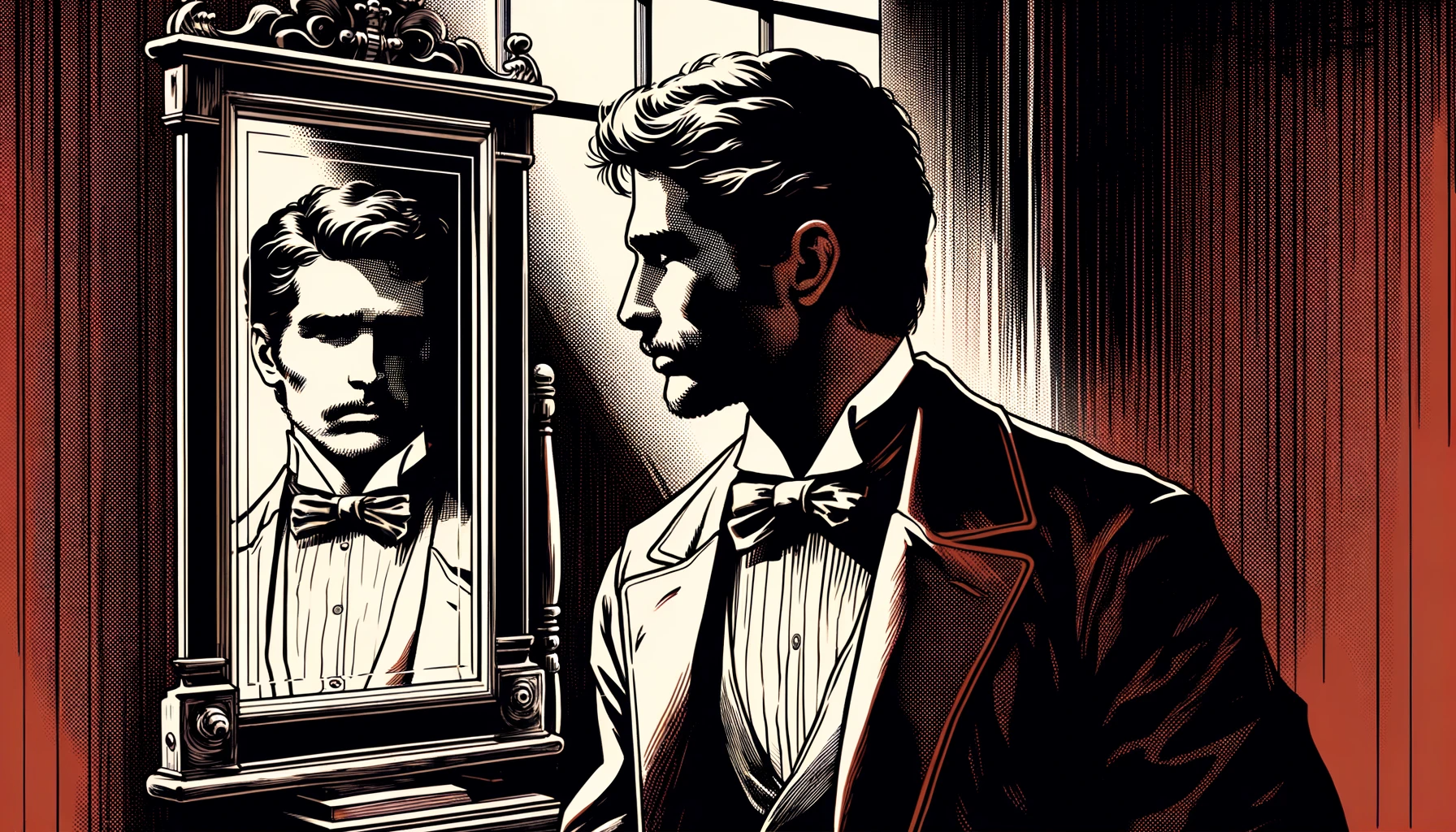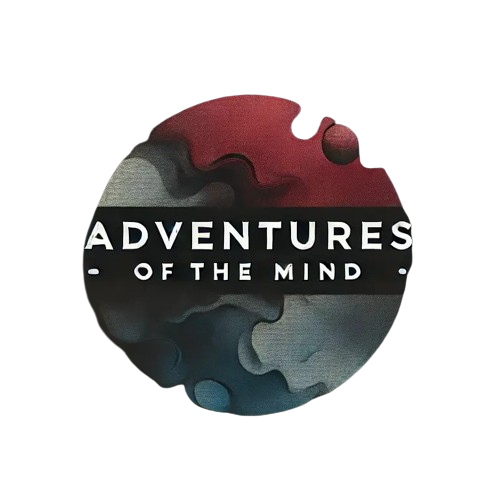Awareness: The Secret to Change
Published by Ben Worrall 16th January 2024

One of the most important requirements for inner work is cultivating ever-more refined levels of awareness.
If you’re reading these words, you already at least have some degree of awareness, but the clarity of this awareness differs from person to person.
A highly trained awareness helps you process experience with greater accuracy. You can view reality through a clearer lens and with more nuance. You see what’s really there, rather than what you have been trained to believe is there. In other words, your perception is more truthful.
On the other hand, if you haven’t developed your awareness, you’re only going to be able to make out silhouettes through a misty window. Your perceptions are not going to be as accurate as you think.
Here’s a statement that’s going to shock you:
99% of your problems in life come from a lack of awareness.
If this doesn’t ring true to you — keep reading. I’ll explain exactly why this is the case.
A Flawed View
Consider your own awareness. It’s mysterious, isn’t it?
You can’t pinpoint exactly how it’s happening, and if you’re honest with yourself, you don’t know what it is that you’re aware of either. You think you do, as you’ve been programmed to categorise and label everything in your environment. But those labels are nothing more than ideas that have been pressed upon raw experience and then used to construct a story.
We take for granted that a clear awareness of reality is a given.
It’s not.
It’s a constructed narrative based on your survival needs.
The human mind is biased towards those parts of reality that aid its survival as a conceptual form. Its labelling of truth will align with what benefits the self, or at least, what the mind believes benefits the self.
The more conceptual certainty you have built up over the years, and the less you have done to clear this baggage, the more self-deceived you will be, while not even considering the possibility that your picture of reality is less than perfectly accurate.
Cultivating Awareness
What does cultivating awareness look like?
It’s like shining a bright light on a map that was previously shrouded in darkness, uncovering the insights that reside there. As greater stretches of darkness are replaced with light, more of the terrain is revealed, and you become more aligned with what is true.
Mindfulness
Mindfulness is a mental ability that arises alongside a broadening of awareness. By practicing techniques that allow you to develop mindfulness — various types of meditation for example — you’re better able to take a step back and view your experience from a meta-perspective.
This broadening of awareness into the meta is fundamental for making changes as you can now view your experience more objectively. You’re no longer so attached to it that it becomes impossible to make any real adjustments.
You’re more aware of what’s arising in the present moment. You notice and observe the feedback from your senses with greater clarity. Your internal experience — thoughts, emotions, and images — are revealed as the object of your awareness rather than part of the subject.
Imagine two pieces of paper that have been stuck together for a long time, and then suddenly half-peeling one piece of paper away from the other so that it can see the other for what it is — this is basically what is happening to you as you become more mindful.
Mastery of Body and Mind
You can use your expanded awareness to regain control of your thoughts, emotions, and body.
Most of us are slaves to our thoughts and emotions. If you’ve ever tried to observe your thoughts for more than a couple of minutes then you know exactly what I’m talking about. The thinking process is like an untamed beast with mystical powers, or a shape-shifting acrobat determined to misdirect the gaze of the audience.
Learning to master your thought process is difficult. With consistent practice, however, you can become aware of your thinking patterns and how certain experiences translate into thought stories that end up taking you miles away. You’ll more easily notice when a new thought story is leaving the station, and over time, move closer to the driver’s seat.
A key turning point is when you begin to understand the extent to which sensations in the body are created by emotions and thoughts, and how in turn, sensations create further emotions and thoughts.
This cyclical process of thinking and feeling is a powerful, unconscious dictator of your daily experience. So gaining a greater awareness of how this process is operating within you is a huge step toward mastery of your body and mind.
Let me give you a personal example of how this works.
I’m sitting here right now, writing this article, and I’m noticing a slight tension in my stomach. There’s also a heaviness above my eyes. I know these are subtle physical symptoms of stress, and that they directly relate to my beliefs about how important it is to produce a high-quality piece of work. There’s an insecurity about my writing. I’m questioning whether my communication is strong enough to do this topic justice. These are underlying beliefs that have festered over time and now take the form of specific thoughts. These thoughts produce emotions — in this case mild anxiety and hopelessness. And these emotions are directly translated into the somatic symptoms I’m experiencing. This isn’t just a problem that has arisen in this specific situation. It’s a learned reaction that has been formulated over many years and now presents itself in situations where I feel there’s pressure to perform and succeed.
A few years ago I wouldn’t have been able to notice this pattern and how my beliefs, thoughts, emotions, and body are feeding off each other to create a negative experience. It’s cultivating this expanded awareness that has given me the ability to step back and examine exactly what’s going on.
Situation and Reaction
You can also increase your awareness of how you operate in the world by noticing your situation-reaction patterns.
There are patterns built into your personality. You react to situations based on your perception of them. For example, you may notice yourself getting triggered by a friend’s comment. Reactions like this are important to note as they reveal new areas where investigation may be required. As your awareness increases, you’ll be able to see yourself reacting to certain trigger situations in real-time, similar to how you notice bodily sensations arising in response to thoughts and emotions.
“95 percent of our behaviour, feeling, and response is habitual.” — Maxwell Maltz, Psycho-Cybernetics.
If your life is constructed around habits, becoming aware of exactly what your habits are and how they could potentially be modified over time is going to be completely life-transforming. The difficult part is cultivating awareness of your habits in the first place, and having the wisdom to realise how they are holding you back.
Destructive habits are difficult to change, but by becoming aware of them, you will begin to see more clearly the negative impact they are having on your life. Eventually, there will come a tipping point, where you become so aware of the destructive nature of these habits that you’ll begin to automatically move in the direction of changing them. They have become impossible to ignore and their presence becomes more painful than the process of change.
Broad Learning
Our minds are filled with cultural programming. Standard education usually doesn’t venture outside certain bounds. The starting point to cultivating greater levels of awareness is an intense exploration of ideas and perspectives outside the norm of your upbringing and the cultural memes you’re familiar with.
This process involves reading and researching broadly and becoming increasingly open-minded to perspectives that may first appear to be outlandish, uninteresting, or irrelevant to your life.
Learning in this way is the equivalent of slowly uncovering areas of the dark map discussed earlier. As more locations on the map are revealed you can follow connecting pathways that lead to further areas of discovery.
The point is to use these knowledge points as signposts for further discovery. If only a small area of your map is uncovered, as it is for most people who haven’t taken the time to explore ideas outside what they were force-fed by culture, your awareness is going to be limited as you haven’t formed a strong enough basis of understanding for exploration.
Change through Awareness
The act of trying to will yourself to change is often counter-productive. Will power has its limits, and without an understanding of how various forces are coming together to create the unwanted experience or behaviour in the first place, the problem will tend to creep in through the back door despite your best efforts to push it out of the front.
Instead, you should work on becoming increasingly aware of exactly what is going on inside you. Focus on understanding the root cause of your issues, the various triggers, and the commonalities between them.
This whole process is like solving a puzzle. An increased clarity of awareness allows you to take a holistic perspective and see more and more of the pieces and where they’re currently placed incorrectly. Once the full layout of the puzzle has been revealed, changing, assembling and removing pieces become much easier.
“ There is a commonality to all types of therapy (psychoanalytic, cognitive, humanistic, transpersonal) and that is: awareness in and of itself is curative. They all attempt to allow consciousness to encounter facets of experience that were previously alienated, malformed, distorted, or ignored. By experiencing them fully, they can be genuinely acknowledged and thereby let go of.” — Ken Wilber, Integral Psychology.
Bringing these hidden factors into conscious awareness allows you to take a step back and view them as objects rather than identifying with them as aspects of the subject, which is exactly what you were doing while you were unconscious of their presence. You’re now able to investigate these personality elements with a sense of detachment, rather than fighting to untangle them from the complex grip of the ego. Unsolvable problems can only exist outside of awareness. In the same way, a terrifying guard dog who growls and barks at intruders all night may turn into a loveable puppy come morning. Try to imagine the existence of an all-knowing and all-seeing being with unlimited awareness. No problems could exist from the perspective of this being as its awareness reveals all. Every problem is seen for exactly what it is, and therefore, does not appear as a threat to the larger system. With this in mind, should we not all try to move ourselves towards emulating this all-seeing entity by expanding our awareness and revealing more and more of what hides in the dark? This process is exactly what is going to lead to long-term, permanent change.
Where are you headed?
Having a clear awareness is key to making permanent change, however alongside an awareness of your current situation, you also need to be aware of where you want to be and of what you want to create. How is it you want to change? What’s your vision for yourself and the future? Why is it important? And how can the current pieces be modified to make that vision a reality?
Once a strong, vivid vision for change has been established and your intention has been set, you have aligned yourself with the creative process of the universe. This mysterious but powerful mechanism has been given permission to bring about these changes through you.
Areas of investigation
We’re talking about using awareness in the process of change, but without a sense of direction, the process of becoming more aware can be overwhelming.
There are many areas of your personality structure which can be uncovered using awareness. Gaining a greater awareness of these areas will be crucial in the process of both understanding and changing yourself. Here are some of the major points of investigation:
Childhood experiences, especially the negative ones, and how they influenced the person you are today.
Defence mechanisms or other survival strategies you unconsciously rely on to protect yourself from situations where you could be vulnerable to emotional pain.
Fears and phobias, your reactions to them, and their root causes.
Muscle tensions, posture, weakness, illness, and other somatic symptoms that are chronic or arise in times of emotional stress.
Your goals, aspirations, wants, and needs. Try to become aware of exactly
why you’re striving for these things and honestly assess your deepest motivations behind them.
Multiple voices, personalities, archetypes, personas, or parts that arise as aspects of your overall personality depending on the situation you find yourself in.
How you act with others. Especially family members or in relationships. Look for areas of conflict.
Your judgements, criticisms, beliefs, and unquestioned assumptions. These are both applicable to yourself and the external world. These often won’t appear as opinions but as facts. With increased awareness, you can begin to notice them for what they are
Complexity & Simplicity
Cultivating awareness isn’t just about personal change, but also training ourselves to experience life with greater accuracy.
Often our awareness of the world around us is distorted or simplified due to our cultural programming and our fixation on everyday tasks. We tend to rush from one objective to the next in a mechanical way without giving proper care and attention to the details. Our time and attention are limited and thus to save on mental bandwidth, it makes sense to live in this auto-pilot mode.
Complexity
The problem is living in this way limits our humanness. We don’t permit ourselves to become aware of the complexity of life. We use concepts as a replacement for truth. We see the elephant as an elephant rather than a terrifying, flappy beast.
Developing a greater awareness of everyday external experiences takes us back to a similar perspective we had as young children. When we saw what was there in front of us, rather than an impression of it. This was before the meaning of our experiences was pressed down into cut-and-dry concepts and attached to our web of beliefs, creating a solid sense of reality.
Tapping back into this attention and awareness reveals reality in greater complexity than we ever thought possible. The more we look, the more we see that everyday objects possess infinite complexity within themselves. The scattered droplets of water on the window can suddenly become an intricate world of their own.
The same can also be applied to any topic, field, or interest. Look at the subject matter from an outsider’s perspective and it can be reduced to a simplified statement or an overall impression, but talk to someone who has studied that field for decades, and you’ll soon become aware of the seemingly endless complexity involved.
Simplicity
While it’s true that complexity is often overlooked, we can also take the reverse perspective and apply awareness to what appears to be complex and see it instead as simple.
This is achieved by collapsing boundaries, by noticing artificial distinctions for what they are. Instead of zooming in, we zoom out.
The parts of an elephant become an impression of the overall elephant and the elephant itself becomes a vital part of the ecosystem it exists in.
The droplets running down the window are seen as a side effect of the process of a warming of the environment.
The further we zoom out the larger the picture gets until eventually, we become aware that we can no longer make truthful distinctions between anything as these distinctions are arbitrary, and not inherent to reality itself.
Creative Change
The main takeaway is developing your awareness allows you to become more aligned with what is true. Our perspective is no longer imprisoned by the artificial lines that have been drawn for us by culture, we’re free to explore our experience as it is.
It’s from this place of freedom that problems can be solved and what previously seemed like fixed aspects of reality can be questioned and creatively moulded into something new.
Ben Worrall





